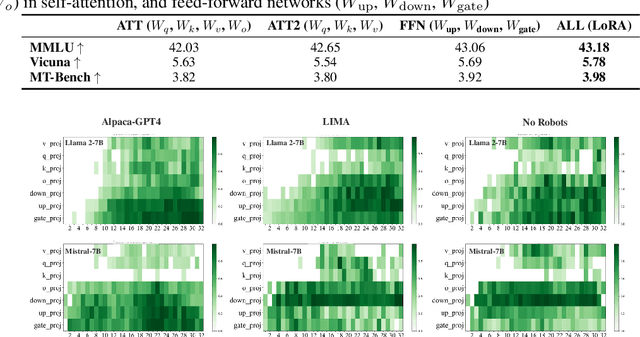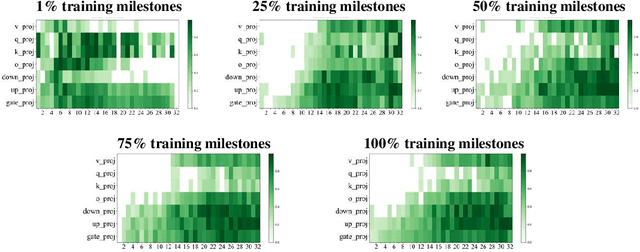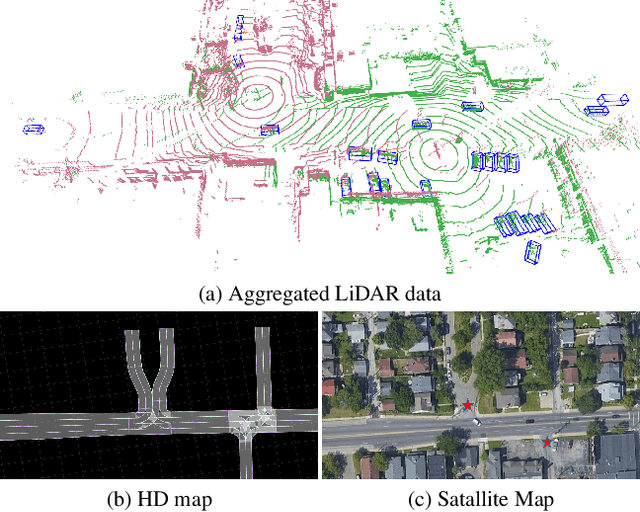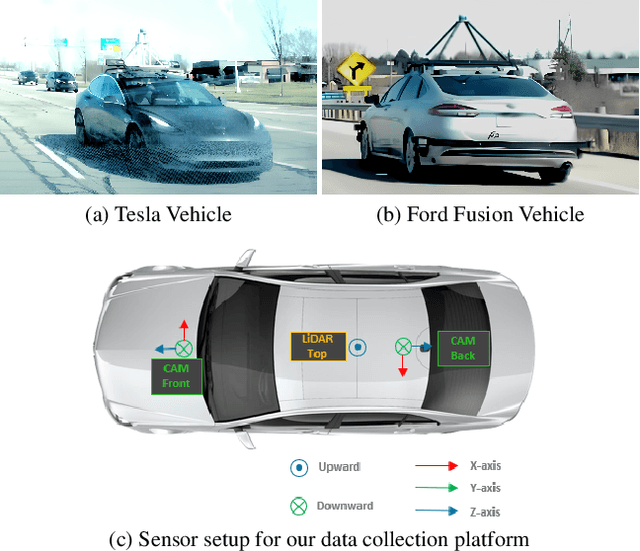Xiaoyu Dong
Optimal Subspace Embeddings: Resolving Nelson-Nguyen Conjecture Up to Sub-Polylogarithmic Factors
Aug 19, 2025Abstract:We give a proof of the conjecture of Nelson and Nguyen [FOCS 2013] on the optimal dimension and sparsity of oblivious subspace embeddings, up to sub-polylogarithmic factors: For any $n\geq d$ and $\epsilon\geq d^{-O(1)}$, there is a random $\tilde O(d/\epsilon^2)\times n$ matrix $\Pi$ with $\tilde O(\log(d)/\epsilon)$ non-zeros per column such that for any $A\in\mathbb{R}^{n\times d}$, with high probability, $(1-\epsilon)\|Ax\|\leq\|\Pi Ax\|\leq(1+\epsilon)\|Ax\|$ for all $x\in\mathbb{R}^d$, where $\tilde O(\cdot)$ hides only sub-polylogarithmic factors in $d$. Our result in particular implies a new fastest sub-current matrix multiplication time reduction of size $\tilde O(d/\epsilon^2)$ for a broad class of $n\times d$ linear regression tasks. A key novelty in our analysis is a matrix concentration technique we call iterative decoupling, which we use to fine-tune the higher-order trace moment bounds attainable via existing random matrix universality tools [Brailovskaya and van Handel, GAFA 2024].
GEMeX: A Large-Scale, Groundable, and Explainable Medical VQA Benchmark for Chest X-ray Diagnosis
Nov 25, 2024



Abstract:Medical Visual Question Answering (VQA) is an essential technology that integrates computer vision and natural language processing to automatically respond to clinical inquiries about medical images. However, current medical VQA datasets exhibit two significant limitations: (1) they often lack visual and textual explanations for answers, which impedes their ability to satisfy the comprehension needs of patients and junior doctors; (2) they typically offer a narrow range of question formats, inadequately reflecting the diverse requirements encountered in clinical scenarios. These limitations pose significant challenges to the development of a reliable and user-friendly Med-VQA system. To address these challenges, we introduce a large-scale, Groundable, and Explainable Medical VQA benchmark for chest X-ray diagnosis (GEMeX), featuring several innovative components: (1) A multi-modal explainability mechanism that offers detailed visual and textual explanations for each question-answer pair, thereby enhancing answer comprehensibility; (2) Four distinct question types, open-ended, closed-ended, single-choice, and multiple-choice, that better reflect diverse clinical needs. We evaluated 10 representative large vision language models on GEMeX and found that they underperformed, highlighting the dataset's complexity. However, after fine-tuning a baseline model using the training set, we observed a significant performance improvement, demonstrating the dataset's effectiveness. The project is available at www.med-vqa.com/GEMeX.
Optimal Oblivious Subspace Embeddings with Near-optimal Sparsity
Nov 13, 2024
Abstract:An oblivious subspace embedding is a random $m\times n$ matrix $\Pi$ such that, for any $d$-dimensional subspace, with high probability $\Pi$ preserves the norms of all vectors in that subspace within a $1\pm\epsilon$ factor. In this work, we give an oblivious subspace embedding with the optimal dimension $m=\Theta(d/\epsilon^2)$ that has a near-optimal sparsity of $\tilde O(1/\epsilon)$ non-zero entries per column of $\Pi$. This is the first result to nearly match the conjecture of Nelson and Nguyen [FOCS 2013] in terms of the best sparsity attainable by an optimal oblivious subspace embedding, improving on a prior bound of $\tilde O(1/\epsilon^6)$ non-zeros per column [Chenakkod et al., STOC 2024]. We further extend our approach to the non-oblivious setting, proposing a new family of Leverage Score Sparsified embeddings with Independent Columns, which yield faster runtimes for matrix approximation and regression tasks. In our analysis, we develop a new method which uses a decoupling argument together with the cumulant method for bounding the edge universality error of isotropic random matrices. To achieve near-optimal sparsity, we combine this general-purpose approach with new traces inequalities that leverage the specific structure of our subspace embedding construction.
Understanding Layer Significance in LLM Alignment
Oct 23, 2024



Abstract:Aligning large language models (LLMs) through fine-tuning is essential for tailoring them to specific applications. Therefore, understanding what LLMs learn during the alignment process is crucial. Recent studies suggest that alignment primarily adjusts a model's presentation style rather than its foundational knowledge, indicating that only certain components of the model are significantly impacted. To delve deeper into LLM alignment, we propose to identify which layers within LLMs are most critical to the alignment process, thereby uncovering how alignment influences model behavior at a granular level. We propose a novel approach to identify the important layers for LLM alignment (ILA). It involves learning a binary mask for each incremental weight matrix in the LoRA algorithm, indicating the significance of each layer. ILA consistently identifies important layers across various alignment datasets, with nearly 90% overlap even with substantial dataset differences, highlighting fundamental patterns in LLM alignment. Experimental results indicate that freezing non-essential layers improves overall model performance, while selectively tuning the most critical layers significantly enhances fine-tuning efficiency with minimal performance loss.
AI Can Be Cognitively Biased: An Exploratory Study on Threshold Priming in LLM-Based Batch Relevance Assessment
Sep 24, 2024



Abstract:Cognitive biases are systematic deviations in thinking that lead to irrational judgments and problematic decision-making, extensively studied across various fields. Recently, large language models (LLMs) have shown advanced understanding capabilities but may inherit human biases from their training data. While social biases in LLMs have been well-studied, cognitive biases have received less attention, with existing research focusing on specific scenarios. The broader impact of cognitive biases on LLMs in various decision-making contexts remains underexplored. We investigated whether LLMs are influenced by the threshold priming effect in relevance judgments, a core task and widely-discussed research topic in the Information Retrieval (IR) coummunity. The priming effect occurs when exposure to certain stimuli unconsciously affects subsequent behavior and decisions. Our experiment employed 10 topics from the TREC 2019 Deep Learning passage track collection, and tested AI judgments under different document relevance scores, batch lengths, and LLM models, including GPT-3.5, GPT-4, LLaMa2-13B and LLaMa2-70B. Results showed that LLMs tend to give lower scores to later documents if earlier ones have high relevance, and vice versa, regardless of the combination and model used. Our finding demonstrates that LLM%u2019s judgments, similar to human judgments, are also influenced by threshold priming biases, and suggests that researchers and system engineers should take into account potential human-like cognitive biases in designing, evaluating, and auditing LLMs in IR tasks and beyond.
Continual Dialogue State Tracking via Reason-of-Select Distillation
Aug 19, 2024



Abstract:An ideal dialogue system requires continuous skill acquisition and adaptation to new tasks while retaining prior knowledge. Dialogue State Tracking (DST), vital in these systems, often involves learning new services and confronting catastrophic forgetting, along with a critical capability loss termed the "Value Selection Quandary." To address these challenges, we introduce the Reason-of-Select (RoS) distillation method by enhancing smaller models with a novel 'meta-reasoning' capability. Meta-reasoning employs an enhanced multi-domain perspective, combining fragments of meta-knowledge from domain-specific dialogues during continual learning. This transcends traditional single-perspective reasoning. The domain bootstrapping process enhances the model's ability to dissect intricate dialogues from multiple possible values. Its domain-agnostic property aligns data distribution across different domains, effectively mitigating forgetting. Additionally, two novel improvements, "multi-value resolution" strategy and Semantic Contrastive Reasoning Selection method, significantly enhance RoS by generating DST-specific selection chains and mitigating hallucinations in teachers' reasoning, ensuring effective and reliable knowledge transfer. Extensive experiments validate the exceptional performance and robust generalization capabilities of our method. The source code is provided for reproducibility.
Vector Quantization for Recommender Systems: A Review and Outlook
May 06, 2024Abstract:Vector quantization, renowned for its unparalleled feature compression capabilities, has been a prominent topic in signal processing and machine learning research for several decades and remains widely utilized today. With the emergence of large models and generative AI, vector quantization has gained popularity in recommender systems, establishing itself as a preferred solution. This paper starts with a comprehensive review of vector quantization techniques. It then explores systematic taxonomies of vector quantization methods for recommender systems (VQ4Rec), examining their applications from multiple perspectives. Further, it provides a thorough introduction to research efforts in diverse recommendation scenarios, including efficiency-oriented approaches and quality-oriented approaches. Finally, the survey analyzes the remaining challenges and anticipates future trends in VQ4Rec, including the challenges associated with the training of vector quantization, the opportunities presented by large language models, and emerging trends in multimodal recommender systems. We hope this survey can pave the way for future researchers in the recommendation community and accelerate their exploration in this promising field.
Optimal Embedding Dimension for Sparse Subspace Embeddings
Nov 17, 2023


Abstract:A random $m\times n$ matrix $S$ is an oblivious subspace embedding (OSE) with parameters $\epsilon>0$, $\delta\in(0,1/3)$ and $d\leq m\leq n$, if for any $d$-dimensional subspace $W\subseteq R^n$, $P\big(\,\forall_{x\in W}\ (1+\epsilon)^{-1}\|x\|\leq\|Sx\|\leq (1+\epsilon)\|x\|\,\big)\geq 1-\delta.$ It is known that the embedding dimension of an OSE must satisfy $m\geq d$, and for any $\theta > 0$, a Gaussian embedding matrix with $m\geq (1+\theta) d$ is an OSE with $\epsilon = O_\theta(1)$. However, such optimal embedding dimension is not known for other embeddings. Of particular interest are sparse OSEs, having $s\ll m$ non-zeros per column, with applications to problems such as least squares regression and low-rank approximation. We show that, given any $\theta > 0$, an $m\times n$ random matrix $S$ with $m\geq (1+\theta)d$ consisting of randomly sparsified $\pm1/\sqrt s$ entries and having $s= O(\log^4(d))$ non-zeros per column, is an oblivious subspace embedding with $\epsilon = O_{\theta}(1)$. Our result addresses the main open question posed by Nelson and Nguyen (FOCS 2013), who conjectured that sparse OSEs can achieve $m=O(d)$ embedding dimension, and it improves on $m=O(d\log(d))$ shown by Cohen (SODA 2016). We use this to construct the first oblivious subspace embedding with $O(d)$ embedding dimension that can be applied faster than current matrix multiplication time, and to obtain an optimal single-pass algorithm for least squares regression. We further extend our results to construct even sparser non-oblivious embeddings, leading to the first subspace embedding with low distortion $\epsilon=o(1)$ and optimal embedding dimension $m=O(d/\epsilon^2)$ that can be applied in current matrix multiplication time.
Understanding Dark Scenes by Contrasting Multi-Modal Observations
Aug 23, 2023Abstract:Understanding dark scenes based on multi-modal image data is challenging, as both the visible and auxiliary modalities provide limited semantic information for the task. Previous methods focus on fusing the two modalities but neglect the correlations among semantic classes when minimizing losses to align pixels with labels, resulting in inaccurate class predictions. To address these issues, we introduce a supervised multi-modal contrastive learning approach to increase the semantic discriminability of the learned multi-modal feature spaces by jointly performing cross-modal and intra-modal contrast under the supervision of the class correlations. The cross-modal contrast encourages same-class embeddings from across the two modalities to be closer and pushes different-class ones apart. The intra-modal contrast forces same-class or different-class embeddings within each modality to be together or apart. We validate our approach on a variety of tasks that cover diverse light conditions and image modalities. Experiments show that our approach can effectively enhance dark scene understanding based on multi-modal images with limited semantics by shaping semantic-discriminative feature spaces. Comparisons with previous methods demonstrate our state-of-the-art performance. Code and pretrained models are available at https://github.com/palmdong/SMMCL.
V2V4Real: A Real-world Large-scale Dataset for Vehicle-to-Vehicle Cooperative Perception
Mar 19, 2023



Abstract:Modern perception systems of autonomous vehicles are known to be sensitive to occlusions and lack the capability of long perceiving range. It has been one of the key bottlenecks that prevents Level 5 autonomy. Recent research has demonstrated that the Vehicle-to-Vehicle (V2V) cooperative perception system has great potential to revolutionize the autonomous driving industry. However, the lack of a real-world dataset hinders the progress of this field. To facilitate the development of cooperative perception, we present V2V4Real, the first large-scale real-world multi-modal dataset for V2V perception. The data is collected by two vehicles equipped with multi-modal sensors driving together through diverse scenarios. Our V2V4Real dataset covers a driving area of 410 km, comprising 20K LiDAR frames, 40K RGB frames, 240K annotated 3D bounding boxes for 5 classes, and HDMaps that cover all the driving routes. V2V4Real introduces three perception tasks, including cooperative 3D object detection, cooperative 3D object tracking, and Sim2Real domain adaptation for cooperative perception. We provide comprehensive benchmarks of recent cooperative perception algorithms on three tasks. The V2V4Real dataset can be found at https://research.seas.ucla.edu/mobility-lab/v2v4real/.
 Add to Chrome
Add to Chrome Add to Firefox
Add to Firefox Add to Edge
Add to Edge